#Biology
Text

It's salamander season again.
#spotted salamander#salamander#salamander eggs#eggs#egg mass#pond#poo#vernal#vernal pond#vernal pool#Ambystoma maculatum#nature#naturalist#sketch#watercolor#pencil#sketchbook#wildlife#animal#amphibian#Ambystomatidae#science#biology#pond life
290 notes
·
View notes
Text
Okay. This is a pretty big deal in the world of mycology. Historically fungi have been divided up into either parasites that siphon resources from plants, mutualists that cooperate with them, or saprotrophs that break down decaying organic matter (plant and otherwise.) The genus in question, Mycena, has traditionally been made of saprotrophic species feeding on decaying wood.
However, what scientists are observing is Mycena fungi displaying primitive mutualistic behaviors, specifically providing living plants with nitrogen and getting carbon in return from a living partner, or getting to chow down on the plant's remains once deceased. This shows a significant level of adaptability that hasn't been observed in fungi beforehand, though given how much we don't know about fungi there's a good possibility this isn't an unprecedented event.
It doesn't surprise me one bit that we're seeing this in Mycena. These fungi are especially opportunistic; in fact, that mushroom growing out of a frog's skin that we saw a while back was also a Mycena species. Perhaps we need to add bonnet mushrooms to raccoons, dandelions, and other hardy generalists as symbols of scrappy survival in spite of environmental pressures.
#Mycena#bonnet mushrooms#mushrooms#mushroom#fungi#fungus#mycelium#mycology#botany#biology#nature#science#scicomm#evolution#environment#ecology#mutualism#mycorrhizal fungi
375 notes
·
View notes
Text
It's still so weird to me that this is what a bacteriophage actually looks
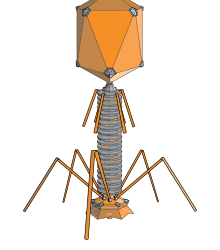
Like, tf do you mean it's not just a diagram, and it really looks like this

#bacteriophage#microbiology#biology#studyblr#study motivation#studyspo#study#student#studyspiration#romanticise studying
126 notes
·
View notes
Note
Do you have a favorite species of shark?
Hi there! I do :) it's the zebra shark!

They're just so beautiful :) One of my favorite things from being an aquarist intern was feeding a trio of them! They are target trained, and they inhale big slabs of fish out of the tongs you hold out for them with their teeny mouths. Big dorks.
I also think it's fascinating that they are thought to be the closest relatives to whale sharks!

You can see a resemblance between these two pictures when you check out their double dorsal fins, sloping back, and pronounced longitudinal ridges!

They are also just the sweetest babies - and in captivity, these sharks often perform parthenogenesis, which is when females basically pup their own clones without the need for a male!
Lemme know your favs in the comments 🦈🤘
#zebra shark#stegostoma tigrinum#chondrichthyes#elasmobranchs#marine biology#marine bio#marine biology studyblr#marine bio studyblr#biology#zoology#marine life#animals#aquarium#shark#sharks
94 notes
·
View notes
Text
youtube
Here are my 3 largest leeches in a jar while I was cleaning their tank a week ago, I tried to post this video directly to tumblr probably half a dozen times and it just never showed up so I had to go through youtube!!!
The big suckers clinging to the glass are their tail ends, while the smaller head end has its own retractable sucker, identical except for the tiny jaws at its center (I say this a lot but leeches don't really have a ring of teeth like in cartoons!)
103 notes
·
View notes
Text
Bumblebees can surprisingly withstand days underwater, according to a study published Wednesday, suggesting they could withstand increased floods brought on by climate change that threaten their winter hibernation burrows.
The survival of these pollinators that are crucial to ecosystems is "encouraging" amid worrying global trends of their declining populations, the study's lead author Sabrina Rondeau told AFP.
With global warming prompting more frequent and extreme floods in regions around the world, it poses "an unpredictable challenge for soil-dwelling species, particularly bees nesting or overwintering underground", co-author Nigel Raine of the University of Guelph said in a statement.
Rondeau said she first discovered queen bumblebees could withstand drowning by accident.
She had been studying the effect of pesticide residues in soil on queen bumblebees that burrow underground for the winter when water accidentally entered the tubes housing a few of the bees.
"I freaked out," said Rondeau, who had been conducting the experiment for her doctoral studies. "It was only a small proportion… so it was not that big of a deal, but I didn't want to lose those bees."
To her "shock", she said, they survived.
"I've been studying bumblebees for a very long time. I've talked about it to a lot of people and no one knew that this was a possibility," she said.
Continue Reading.
104 notes
·
View notes
Text
How Moths Confuse Bats

When your predators use echolocation to locate you, it pays to have an ultrasonic deterrence. So, many species of ermine moths have structures on their wings known as tymbals. (Image credit: Wikimedia/entomart; research credit: H. Mendoza Nava et al.; via APS Physics)
Read the full article
#acoustics#aeroelasticity#biology#buckling instability#fluid dynamics#moths#physics#science#ultrasound
105 notes
·
View notes
Note
hi! you're the only biochemist i know so i have to ask this
my aunt recently got really into this holistic-sounding thing called healing immunity by transfer factors, tied to a very fishy company, 4life. in my understanding, they're preying on the lack of scientific proof that something /doesnt/ work to convince people that it /does/, based on reports of 'clients' that miraculously healed from various conditions from minor allergies to literally cancer, as well as preventing/curing >autism< 💀 problem is, she totally believes this bulshit and is giving them tons of money and trying to get the whole family to try it too
as a biochemist, I was wondering if you ever stumbled across transfer factors, know about any recent research on this field, or know the scientific explanation for why this is a load of baloney
thank you!
I’m familiar with transfer factors. A transfer factor is a chemical compound (often a protein) that is taken from an organism after it develops immunity against a disease. It’s part of immune cell signaling- it’s how your immune cells talk to each other.
But that’s the issue with pseudoscience. Oftentimes, they take something that has a small fraction of truth to it and then completely invent the rest.
Here’s the rest: transfer factors are often incredibly specific. So specific, in fact, that just two strains of the exact same bacteria could lead to two completely different factors being generated in response to them. Also, two different people infected by the exact same illness could generate different antibodies/transfer factors in response. Your immune system is as unique as your fingerprints.
Even if you took the antibodies/transfer factors from one person immune to a disease and injected them into someone currently afflicted by the disease, there’s no guarantee that it’ll make them immune as well. Cell signaling compounds are essentially words in the language your body uses to communicate with itself- and who knows if other people’s cells speak the same language?
For all you know, that transfer factor is telling your body something it might misunderstand completely. What if it “mishears” what that factor is trying to say? You could trigger an unwanted immune response! And that could potentially be even worse than just developing immunity naturally through exposure.
The field of transfer factors is still rudimentary- all of the real (actually scientific) research on injecting people with transfer factors to boost immunity is still very much in its experimental phase. Any company alleging to sell transfer factors to boost immunity is scamming you. Not even real medical companies are doing that yet, and if they could, they would. You know how money hungry pharmaceutical companies are.
Here’s one thing that’s certain: transfer factors cannot cure non immunity/infection related issues. Autism isn’t caused by a pathogen, how can your body develop an immune response to it when there’s nothing to fight? And regarding cancer, there’s already an existing field to treat cancer using your immune system: it’s called immunotherapy. And that will be given to you by a doctor, not some random company trying to sell glorified supplements. And for allergies? Get some antihistamines and an EpiPen.
The best way to boost your immune system is already available: vaccines. Vaccines prompt your body to make ITS OWN transfer factors and antibodies, which guarantees your cells will understand what those factors mean. And the transfer factors your body makes for itself will always be safer and more effective.
Real science beats pseudoscience.
#I love it when you guys ask me scientific questions please ask me more of them#long post#biochemistry#pseudoscience#science#biology
56 notes
·
View notes
Text


wednesday, 24 april 🤍
i feel like a spent a lot of time revising yet did so little. it took me 2 hours to learn twelve flashcards and i didn’t even finish learning them. remembering biology is so hard, but it’s ok, i have tomorrow .*ೃ
7hrs 30 on forest ✿ 221 anki reviews total ☆
♪ of the day | so high school — taylor 🎧
#studyblr#study#study motivation#studyinspo#studyspo#a levels#study aesthetic#study blog#study notes#study tips#academic weapon#academic validation#a level biology#biology#productivity aesthetic#productivity challenge
60 notes
·
View notes
Text

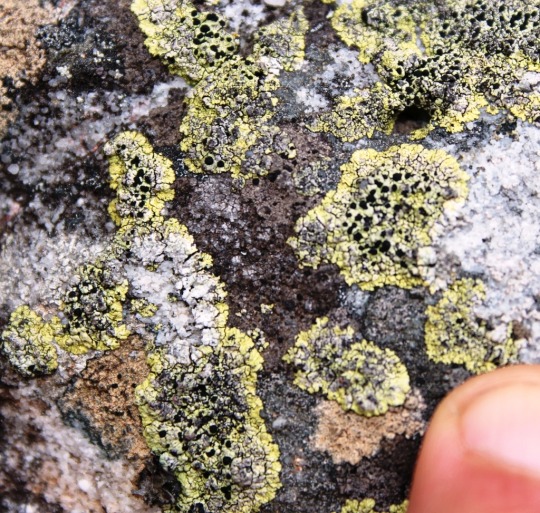

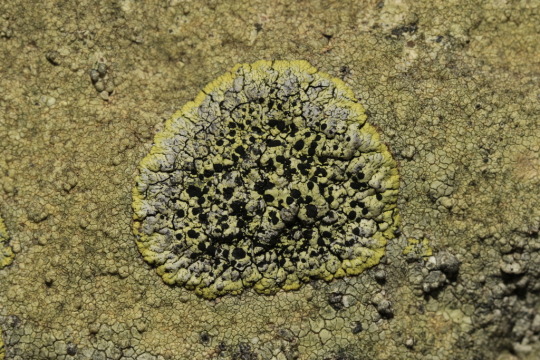
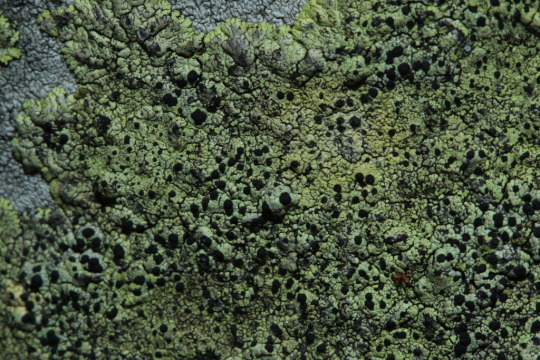


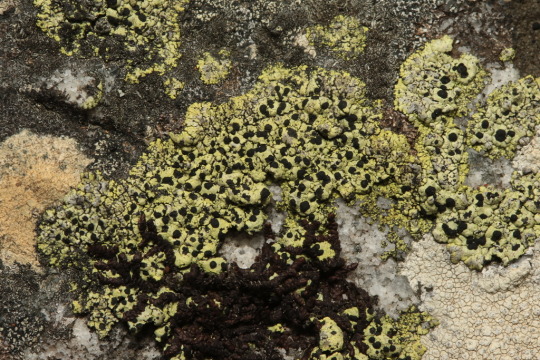
Diploicia africana
This crustose-placodioid lichen grows in yellow rosettes on siliceous, rock in South Africa. The upper surface is often bleached and wrinkled toward the center of the rosette, and speckled with black, lecideine apothecia. Being that D. africana is a) crustose b) saxicolous and c) endemic to the southern hemisphere, it shouldn't be surprising that this lichen appears to be largely understudied, and it might be more widespread than currently recognized.
images: source
info: source
#lichen#lichens#lichenology#lichenologist#mycology#ecology#biology#fungi#fungus#symbiosis#symbiotic organisms#algae#life science#environmental science#natural science#nature#the natural world#Diploicia africana#Diploicia#trypo#trypophobia#I'm lichen it#lichen a day#daily lichen post#lichen subscribe
56 notes
·
View notes
Text
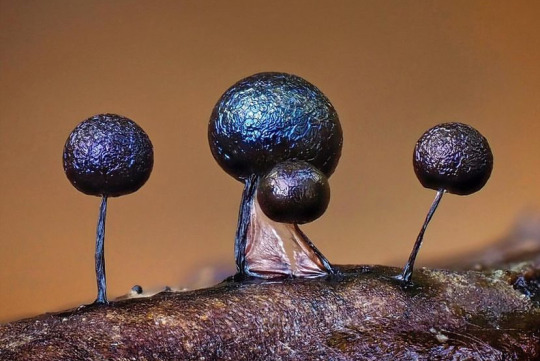
Lamproderma scintillans by Andy Sands
#lamproderma#andy sands#iridescent#slime mold#slime mould#myxomycota#forest floor#macro photography#myxomycetes#microbiota#microbiology#microorganisms#nature photography#forest#biology
59 notes
·
View notes
Text

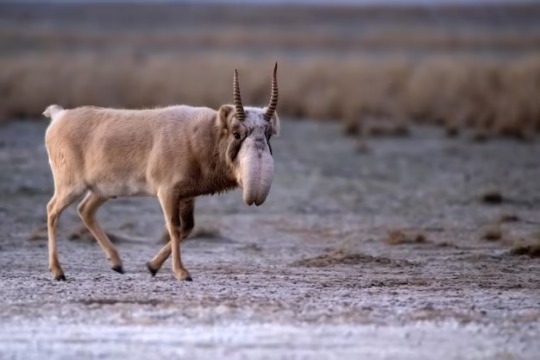
Saiga antelope (Saiga tatarica)
Saiga don’t only look weird, but are found in the last place you would expect antelope to be- the cold, dry Eurasian steppe. Their large nose helps filter out dust and warm air before it reaches their lungs, and they also develop a warm, grey-brown coat in the wintertime. During the last ice age, saiga antelope were found across the cold northern steppe, from Britain and Mongolia to Alaska. Unfortunately, they are now critically endangered, found only in a few refuges in Kazakhstan and the surrounding countries.
#markhors-menagerie#animal facts#animals#biology#fun facts#ungulates#even toed ungulates#ruminants#bovidae#antelope#saiga antelope
54 notes
·
View notes
Text
Oh boy I'm getting within shooting range of 1000 followers! That makes me happier than a shoebill in a swamp!

I kinda wanna do something special for 1000 subs. What should I do?
48 notes
·
View notes
Text
Wet Beast Wednesday: spiny softshell turtle
It may be neither Flat Fuck Friday nor Turtle Tuesday, but because this is my series and I can do what I want, I'm talking about a very flat turtle. The spiny softshell turtle (Apalone spinifera) is the most widely distributed and possibly the most common softshell turtle in North America. Its range covers most of the Eastern half of the USA and stretched into Canada and Mexico. There are 6 subspecies separated by geography and hybridization can happen in places where their ranges cross. Hybridization has also been known to happen with the Florida softshell (Apalone ferox). The subspecies are the northern (A. s. spinifera), gulf coast (A. s. aspera), Texas (A. s. emoryi), pallid (A. s. pallida), Guadalupe (A. s. guadalupensis), and black (A. s. atra) spiny softshells.

(Image: a spiny softshell turtle seen from above and to the side. It is a turtle with a wide, flat shell. Its head and one foot are visible. The head is skinny and has an elongated nose. The foot is wide and flat, with webbed toes. The turtle is an olive green with black dots on the skin, yellow stripes on the face, and dark spots on the shell. End ID)
The thing that makes a softshell a softshell is the lack of keratinized scutes on their shells. This makes the shells smooth and leathery. The center of the shell has a layer of solid bone user it, but this does not extend to the edges of the shell, making it less rigid. Softshells are the fragile speedsters of the turtle world. Their shells are a lot lighter and often more streamlined, allowing for faster movement both on land and in water, but they provide less defense. Spiny softshells have spiny projections along the front edge of the carapace (upper shell), with males having more than females. They are some of the largest North American freshwater turtles. Females can reach a carapace length of 54 cm (21 in) and 11 kg (25 lbs) while the smaller males max out at about 25 cm (10 in).
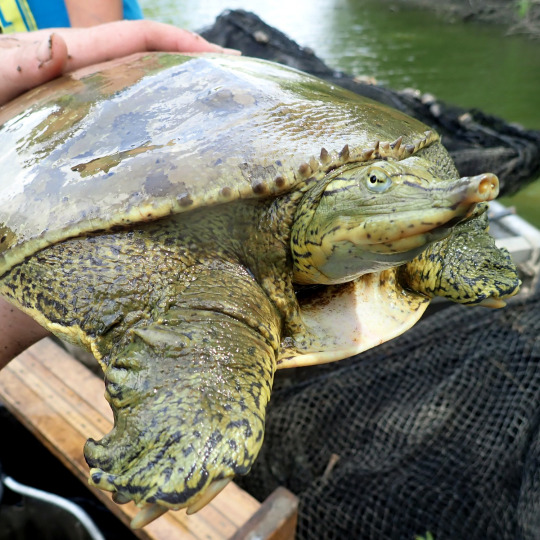
(Image: a spiny softshell being held by a person, seen from the front. The leading edge of the carapace is visible, showing off the small spines. End ID)
Spiny softshells have wide, flat, paddle-like feet with three claws and an elongated nose that acts like a snorkel. The turtles are born a bright olive color with striped faces and dark spots on the shell. Males keep their juvenile coloration for their entire lives while females grow darker ad lose many of their markings. It can be very difficult to tell females of different subspecies apart, while males and juveniles can be distinguished by their markings. Smooth skin and highly vascularized membranes in the cloaca, mouth, and throat allow the turtles to breathe by diffusing dissolved oxygen from the water into their blood.
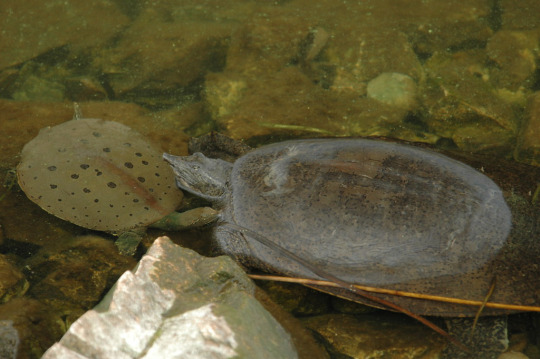
(Image: a male and female spiny softshell facing each other. The male is less than half the size of the female and has an olive colored shell and skin, with dark spots on the shell. The female is a uniform muddy brown color. End ID)
Spiny softshells are generalists able to live in a wide range of habitats. They prefer streams, rivers, and ponds with muddy or sandy bottoms and high visibility, but can live in most freshwater habitats. Softshells are diurnal, spending their days basking and feeding. Being turtles, they are ectothermic, meaning their body temperature matches the surrounding temperature. To warm themselves up, the turtles bask in the sunlight. They can often be found resting on exposed rocks, logs, sandbars, or shorelines. While not particularly social animals, the turtles will bask in groups. When threatened, softshells will attempt to swim away and/or bury themselves. In the right sediment, a softshell can bury itself in under a second. Because their shells are less rigid, softshells have to actively defend themselves when cornered and will bite and scratch. People have to be careful when handling them. They brumate (that's hibernation for reptiles) during winter. While brumating, they bury themselves underwater and slow their metabolism and oxygen requirements. In this state they can fully sustain themselves on oxygen absorbed through their skin or special membranes.
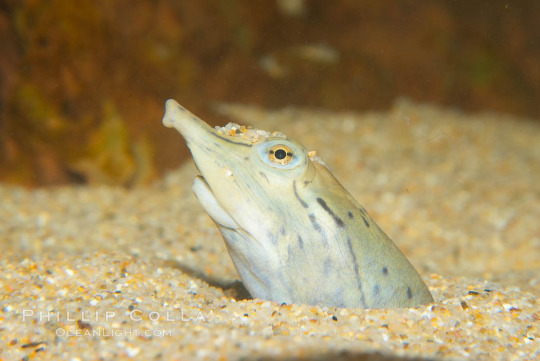
(Image: a spiny softshell turtle buried in its hunting strategy. Only the head is visible above the sand. End ID)
They are primarily carnivores and will eat anything that can fit in their mouths. Aquatic insects, crayfish, worms, amphibians, mussels, snails, fish, and more are on their plate. While capable of fast swimming, they are not pursuit predators. They employ two primary hunting strategies. The first is to bury themselves in the sediment and wait for prey to come by. The second is digging in the sediment to find worms and other animals. Fish have been known to follow digging turtles around to feed on animals unearthed by them.

(Image: a spiny softshell in captivity. It is swimming at the surface of the water in a tank, amongst artificial leaves. End ID)
Spiny softshells mate in spring. Males attempt to woo females by swimming over to them and bumping heads together. The male then sits on top of the female to mate. Unlike most species of turtles, the males do not grab onto the female's shells during mating. Eggs are laid between summer and early fall and will hatch next spring. The female will dig a nest in sandy or gravelly banks and bury the eggs once they have been laid. She provides no further care. Females will typically mate multiple times each year, with each mating having a different nest. The juveniles take 8 to 10 years to reach sexual maturity and they can live up to 50 years in the wild. Many turtles determine sex by the temperature the eggs are incubated in. This is not the case with spiny softshells, who have genetics based sex determination.

(Image: a group of 5 juveniles. The photo focuses on two who are sitting next to each other. One has its front right leg on the shell of the other. They have similar coloration to an adult male. End ID)
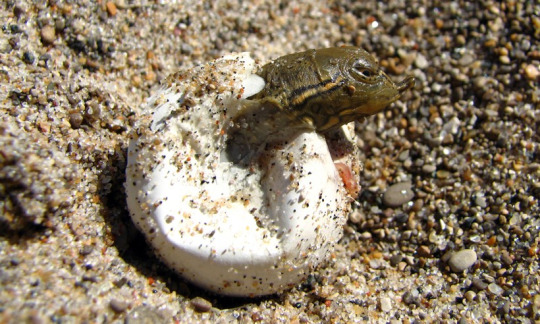
(Image: a newborn emerging from its egg. The egg is round and white, looking like a ping-pong ball. Only the head of the turtle has emerged. End ID)
Most subspecies of spiny softshell are classified as least concern or near threatened by the IUCN, meaning they are not in danger of extinction. The exception is the black spiny softshell, also known as the Cuatro Ciénegas softshell, which is critically endangered. The primary threats to the turtles is habitat loss due to human activity. Adults have no natural predators outside of the Florida and adjacent state populations, which are prey to alligators. Juveniles are eaten by a variety of animals including fish, snakes, raccoons, and herons. People will also eat the adults. Because it can take a whole decade for juveniles to become reproductive, losses in population take a long time to replace. They have been introduced to areas outside of their native range, most notably the western USA. Most of these introductions are due to people releasing pet turtles into the wild.
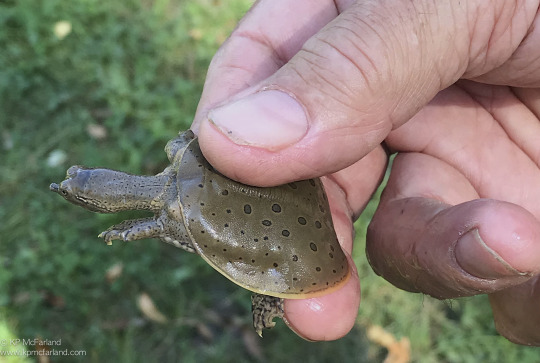
(Image: someone holding a juvenile. The shell is 2-3 times the size of the human's thumb. End ID)
#i typoed it as softhsell more times than I care to admit#wet beast wednesday#turtle#turtles#softshell turtle#soft shell turtle#spiny softshell turtle#reptile#biology#zoology#ecology#animal facts#freshwater ecology#aquatic biology#informative#educational#image described#turtle power#herpetology
47 notes
·
View notes
Text
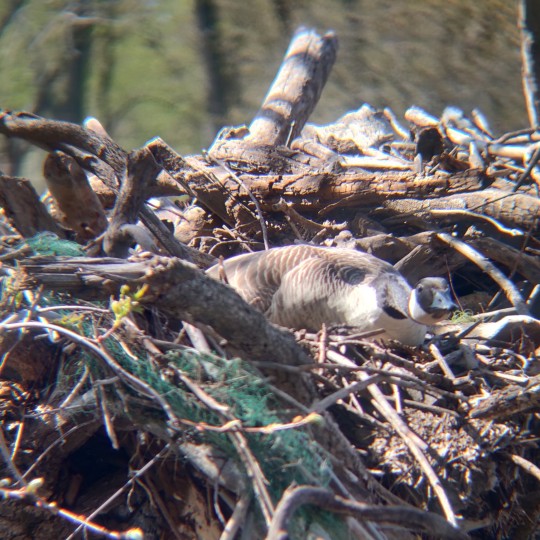
This lady was watching me and my friend very intently as we walked past her nest
#canada goose#goose#geese#canadian geese#birds#bird nest#mine#ornithology#nature#wildlife#naturalist#nature photography#photography#ecology#north america#animals#bird watching#birding#bird photography#birdwatching#bird#ecologist#biology#wildlife biology#biologist#original photography#original photographers#wildlife photography
21 notes
·
View notes
